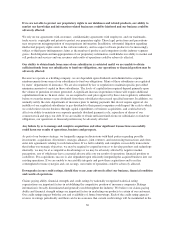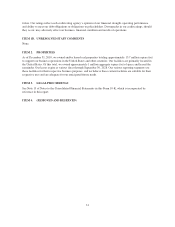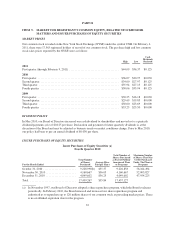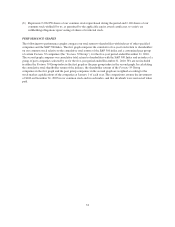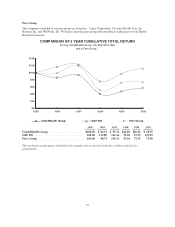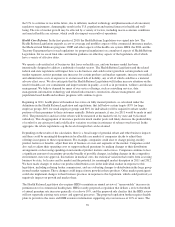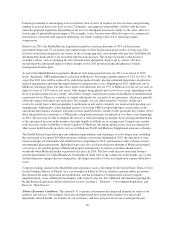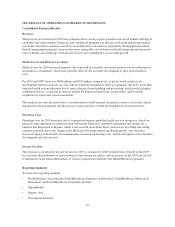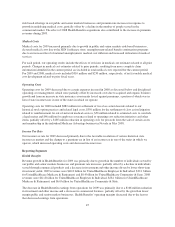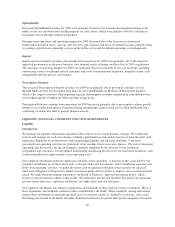United Healthcare 2010 Annual Report Download - page 40
Download and view the complete annual report
Please find page 40 of the 2010 United Healthcare annual report below. You can navigate through the pages in the report by either clicking on the pages listed below, or by using the keyword search tool below to find specific information within the annual report.contracts and care coordination programs. Controlling medical costs requires a comprehensive and integrated
approach to organize and advance the full range of interrelationships among patients/consumers, health
professionals, hospitals, pharmaceutical/technology manufacturers and other key stakeholders.
Medical costs include estimates of our obligations for medical care services rendered on behalf of insured
consumers for which we neither have received nor processed claims, and our estimates for physician, hospital
and other medical cost disputes. In every reporting period, our operating results include the effects of more
completely developed medical costs payable estimates associated with previously reported periods.
Our medical care ratio, calculated as medical costs as a percentage of premium revenues, reflects the
combination of pricing, benefit designs, consumer health care utilization and comprehensive care facilitation
efforts. We seek to sustain a stable medical care ratio for an equivalent mix of business. However, changes in
business mix, such as expanding participation in comparatively higher medical care ratio government-sponsored
public sector programs and recently enacted Health Reform Legislation may impact our premiums, medical costs
and medical care ratio.
In 2011, we expect consumer usage of the health system to increase, resuming its upward growth pattern from
the recent moderation in utilization growth. We will work to manage medical cost trends through affordable
network relationships, pay-for-performance reimbursement programs for care providers, and targeted clinical
initiatives around improving quality and affordability. However, an increase in utilization will likely result in
increased medical costs and an increase in our medical care ratio.
Operating Costs. Operating costs are primarily comprised of costs related to employee compensation and
benefits, agent and broker commissions, premium taxes and assessments, professional fees, advertising and
occupancy costs. We seek to improve our operating cost ratio, calculated as operating costs as a percentage of
total revenues, for an equivalent mix of business. However, changes in business mix, such as increases in the size
of our health services businesses may impact our operating costs and operating cost ratio.
Cash Flows
We generate cash primarily from premiums, service and product revenues and investment income, as well as
proceeds from the sale or maturity of our investments. Our primary uses of cash are for payments of medical
claims and operating costs, payments on debt, purchases of investments, acquisitions, dividends to shareholders
and common stock repurchases. For more information on our cash flows, see “Liquidity” below.
2011 Business Realignment
On January 1, 2011, we realigned certain of our businesses to respond to changes in the markets we serve and the
opportunities that are emerging as the health system evolves. For example, in 2011 OptumHealth’s results of
operations will include our clinical services assets, including Southwest Medical multi-specialty clinics in
Nevada and our Evercare nurse practitioners serving the frail and elderly, which had historically been reported in
UnitedHealthcare Employer & Individual and UnitedHealthcare Medicare & Retirement, respectively.
UnitedHealthcare Employer & Individual’s results of operations will include OptumHealth Specialty Benefits,
including dental, vision, life and disability. There were no changes to our reportable segments as a result of these
changes. Our periodic filings beginning with our first quarter 2011 Form 10-Q will include historical segment
results restated to reflect the effect of this realignment.
Business Trends
Our businesses participate in the U.S. health economy, which comprises approximately 18% of U.S. gross
domestic product and which has grown consistently for many years. We expect overall spending on health care in
38




